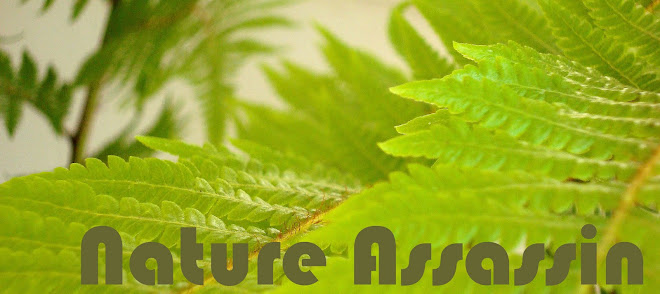Let me solve some commonly asked houseplant questions.
Q: Falling leaves, bare stems, no flowers... what's wrong with my goldfish plant (Nematanthus gregarius)?
A: The problem with your goldfish plant is that it is a goldfish plant. This problem can easily be resolved by never owning another goldfish plant.
Q: Why does my corn plant (Dracaena massangea) have brown tips?
A: Because you're using plain tap water instead of filtered/distilled water. Flush the soil to purge excess salts, and don't give it any more tap water.

RIP D. massangea
Q: I just bought a mother fern (Asplenium bulbiferum). Does it have any special care requirements?
A: Caring for your mother fern is easy. First, take your mother fern to the garbage. Then, throw it away. This treatment has a high test-retest reliability; it works every time.

RIP A. Bulbiferum
Q: Why do my cuttings keep failing?
A: The three most likely culprits are low humidity, low bottom heat, or unsterile media.
Q: My hoya has never been lush. It is sparse and ugly near the top of the pot, and it bothers me. What can I do?
A: The secret trick with hoyas is beer. The brand is irrelevant, so choose what you like. Secure a very large quantity; around 100 beers should do. Judiciously apply the beer to yourself, and you will find that you are no longer bothered by your ugly-ass hoya. This procedure can be repeated as necessary with ugly-ass hoyas.
Q: There's a moth orchid (Phalaenopsis) on the receptionist's desk at my salon/spa/gallery/doctor's office. It's not flowering anymore, and it seems soft and limp. What's wrong?
A: Overwatering. In such settings, decorative orchids tend to get watered too frequently and by too many people. It was probably planted in a dense or "slow" medium when it was purchased, meaning it has poor drainage. Excess water plus poor drainage equals overwatering and root rot, hence the soft leaves. Throw it away and buy a new one... this time give it better light and less water. Also, if you get your orchid from a reputable greenhouse instead of a big chain store, chances are good that it will be planted in a quality medium.
Q: My ivy (Hedera helix) looks a little crispy, and the leaves keep falling...
A: Spider mites.
Q: Really? Couldn't it be a watering problem?
A: It could be, but it's not. It's spider mites.
Q: But I don't see anything tha-
A: SPIDER. MITES.

RIP H. helix NOID























